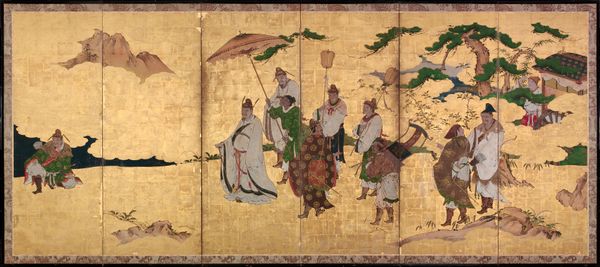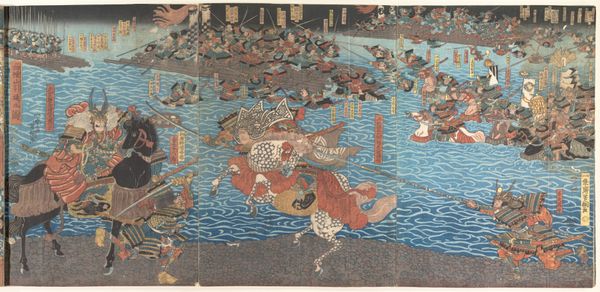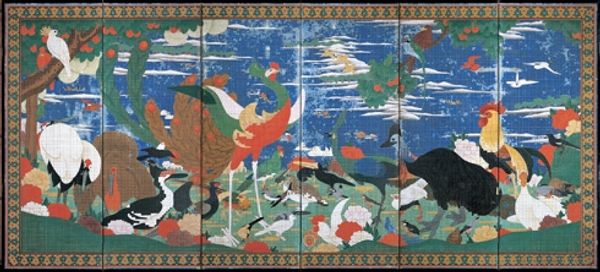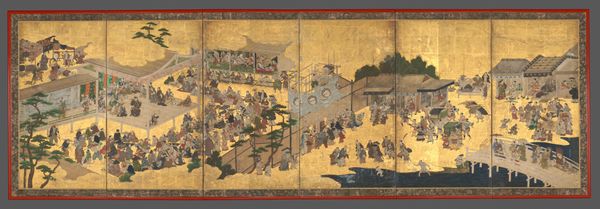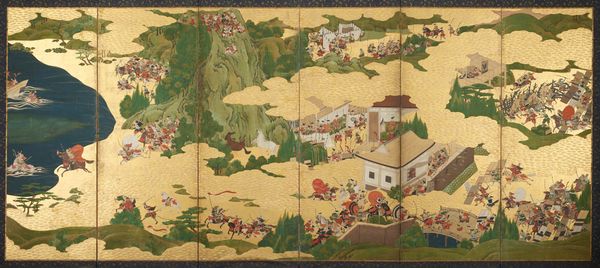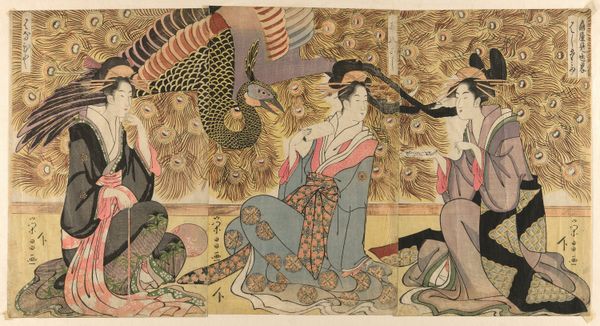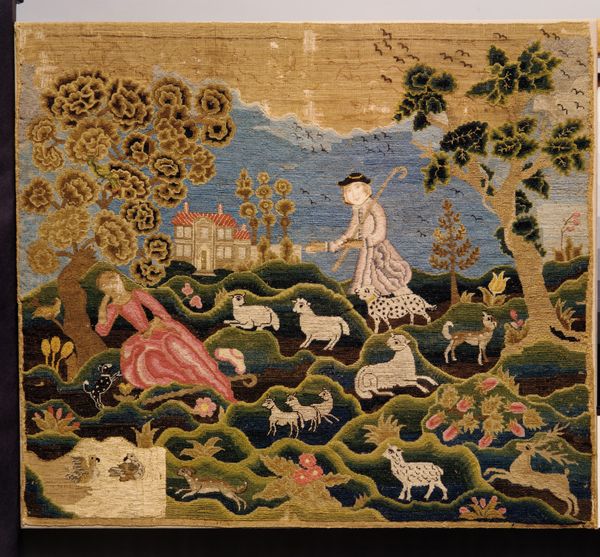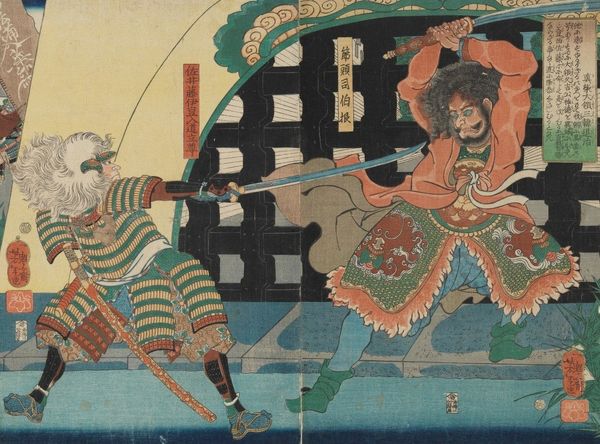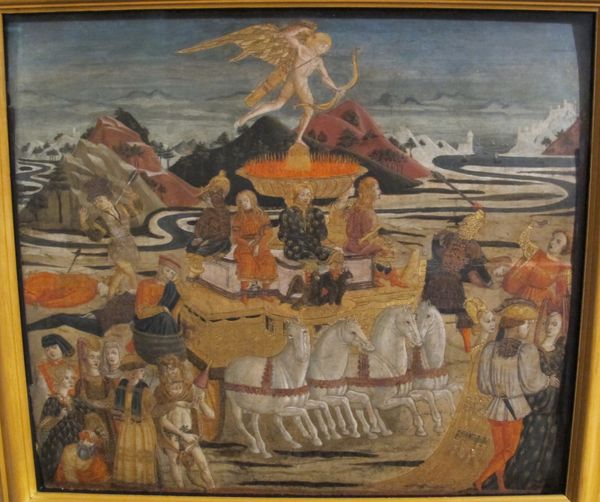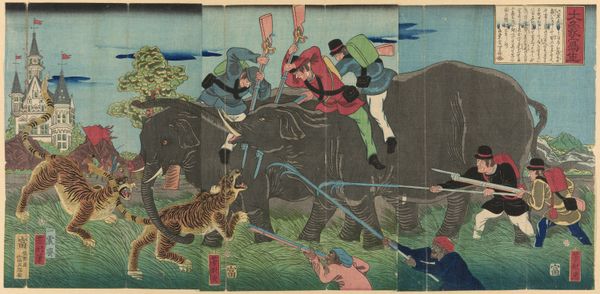
painting, oil-paint
#
medieval
#
painting
#
oil-paint
#
landscape
#
figuration
#
oil painting
#
genre-painting
#
history-painting
#
italian-renaissance
Copyright: Public domain
Curator: Well, here we have "Battle Scene," an oil painting created around 1460 by the Florentine artist known as Lo Scheggia. Editor: It strikes me as oddly… decorative for such a violent subject. The landscape is almost whimsical, the horses carefully posed. It’s far from the chaotic, brutal reality of battle, I imagine. Curator: Absolutely. Scheggia wasn't necessarily aiming for realism here. Think of it less as documentary and more as an idealized vision of chivalry and military prowess. Note how everyone is more or less the same size and level of detail which can also evoke a sense of equality of rank and social importance among its actors. Editor: I am also taken by what almost seems like a dance across the canvas. Look at the rhythmic placement of figures and horses—each spear, shield, and horse seems mirrored, it feels distinctly choreographed. Curator: Exactly! It speaks to a symbolic representation of power and social order. The banners, the armor—each element would have held particular significance for its original audience. The specific color symbolism too. Think of how certain heraldic colors were associated with specific families or political factions. Editor: Which also raises interesting questions of who the painting was for and who it serves. What narratives are emphasized? The painting might be less about war's harsh reality and more a carefully crafted statement about a specific group's authority. And to whom it meant most, particularly looking back from our current sociopolitical standpoint. Curator: And looking at the piece that way we may reflect on collective memories encoded within its brushstrokes. Battle is, for much of society, a shared, almost mythological event and experience. And art creates and reinforces memory that helps us maintain identity. The stylized representation of war becomes an important part of constructing and perpetuating the self and world view. Editor: It makes you consider how art plays an active role in shaping our understanding of conflict and, perhaps more broadly, our cultural narratives. The artwork reflects collective and culturally inflected themes. This, even centuries after it was made. Curator: Precisely! It reveals the endurance and continuity of symbols to shape and control understanding. It is through the combination of these symbols that visual cultural traditions develop and reinforce, time and again, these values. Editor: I concur! It's less a window into the past and more a mirror reflecting how power and narratives have evolved. A continuous story.
Comments
No comments
Be the first to comment and join the conversation on the ultimate creative platform.
